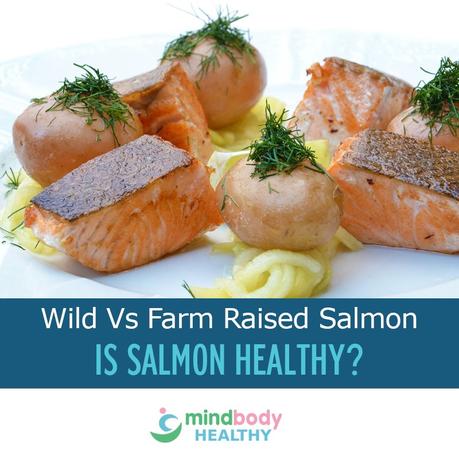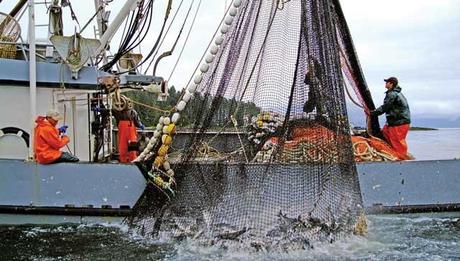
The health benefits of salmon have been assumed for so long that we hardly ever ask is salmon healthy. But we would like to bring the debate a little further, and question the relative health benefits between farm raised salmon and wild salmon.
There is little doubt that wild salmon, usually caught in the northwestern part of North America, are extremely healthy. But the lifestyle of farm raised salmon raises some questions with regards to health risks. Here we will address the question in-depth.
Is Salmon Healthy?
So what actually happens in the life cycle of a farm raised salmon? Their adopted home is in the ocean not far from shore, in vast net cages. They live in densely populated conditions, and because of this diseases and parasites are prevalent.
To cope with this, the fisheries feed the fish antibiotics to keep them alive and relatively healthy. Assessments have shown that salmon raised on these farms have higher levels of PBCs and toxins than wild salmon.
Because the net cages never move, the salmon waste drops to the ocean floor. Since there is no scheduled cleanup maintenance, the area below will become a dead zone, and all aquatic existence will be smothered.
All-in-all it doesn’t seem like ideal conditions for raising healthy stock. And because their food is handed to them rather than swimming the oceans hunting for it, they grow up to be virtual salmon couch-potatoes, growing fat until the harvest.
When Determining Is Salmon Healthy, You Can Be Sure With Wild Salmon
Wild salmon, on the other hand, have to work for a living. They swim around in cold, clear water and eat shellfish and insects, therefore giving their color a reddish hue, while farm raised salmon are naturally gray. Some fish farm businesses will add colorants to the fish, but it isn’t natural.
The fact is, if you are eating wild caught salmon at it is not the summer months, you are probably eating canned salmon. Wild Pacific salmon are only harvest in June and July, so obviously the rest of the year it cannot be sold fresh, so is canned. Farmed salmon is farmed all year so can be sold fresh virtually at any time.

There are reasons why salmon isn’t caught in its natural habit to a large degree outside of the Alaska area. The product used to be caught in the Atlantic, but the stock there has been depleted due to poor conservation for the fish.
The rivers on the East Coast of the United States, which was one of their predominant breeding grounds, became polluted and dammed up. In contrast the Pacific salmon’s environment has stayed much more stable.
So far we have not painted a great picture of the farmed salmon industry. But in fact if we are going to continue to eat this wonderful food, is it as bad for us as the picture we paint.
Read more about salmon nutrition and you can make a few judgments of your own. But these foods obviously have to adhere to safety standards of governments where the product is marketed, and it does pass safety inspections.
In order that we may feel safe about including salmon in our diet, we should look at the following options:
- Experts say that we can safely consume farmed salmon, but not to eat it more than once, or a maximum twice a week.
- Also, most of the contaminants are in any excess fat or skin of the fish, so don’t include that.
- Look for Alaska salmon in cans, as you can be assured of its safety.
- Last, there are other fish options to get your omega-3s from, such as lake trout, mackerel, herring and sardines, as well as albacore tuna. They aren’t perfect substitutes to salmon taste-wise, but replacing salmon with one of these options occasionally could be a health option.

